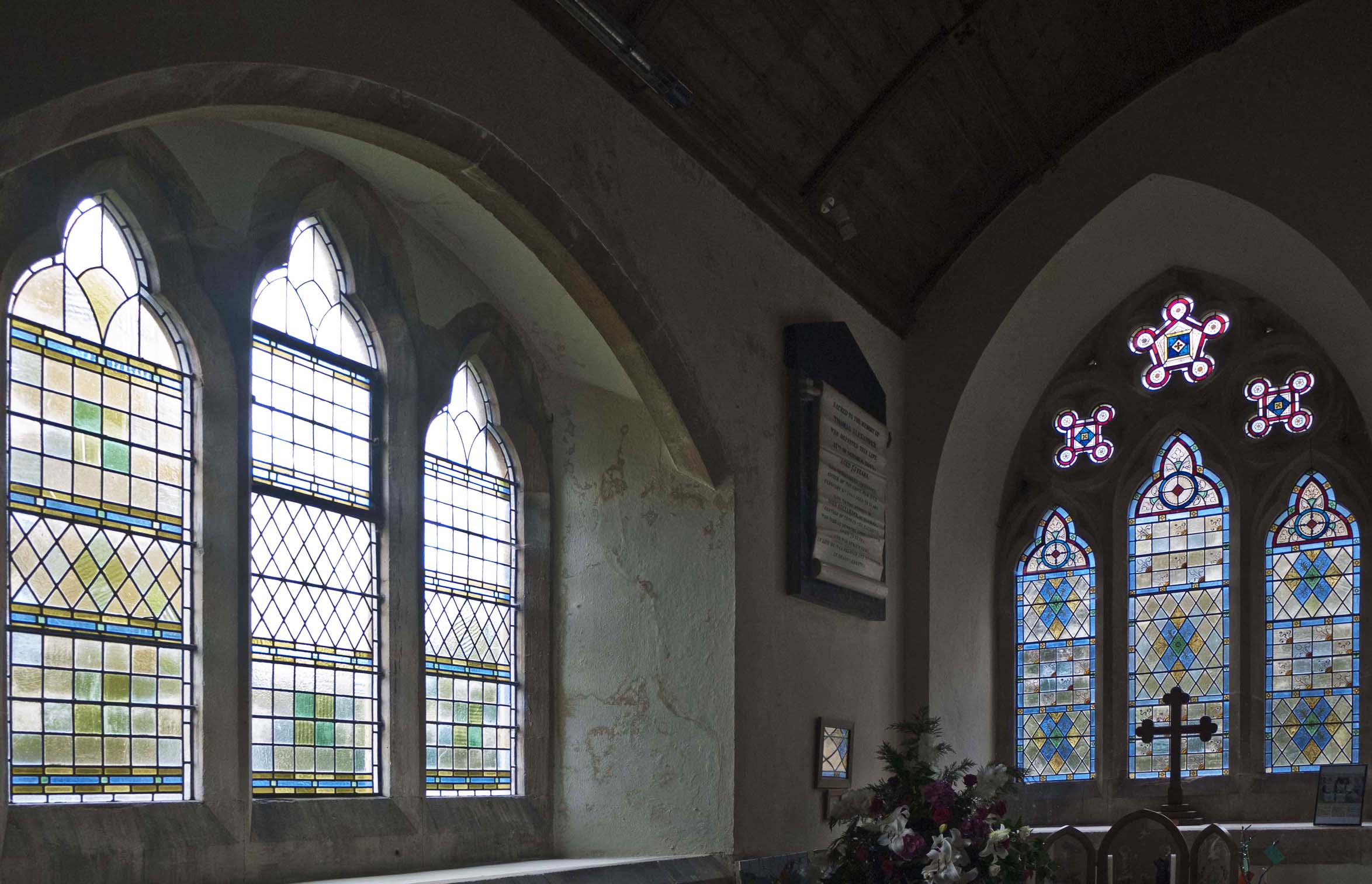Detail of window with the roundels spaced in squares, south and east aisle windows.
I saw this church from the car, on a side road, and decided to explore. The door was boarded up and there were KEEP OUT security signs on the churchyard gates, obviously I couldn’t get inside. But I could see fantastic patterned windows even from the outside, unlike anything I have ever seen before. All the windows, except the stained glass east window, are filled with leaded lights using pressed glass roundels and other linking shapes.
Pressed glass roundel in leaded framework.
Moving around the church, I was even more excited to see that the roundels shifted in the next few windows to form quatrefoils, then trefoils, then quatrefoils arranged differently, on stalks and looking like flowers.
Detail of window with the roundels forming quatrefoils, south aisle window.
Detail of window with the roundels forming trefoils, west aisle window.
Detail of window with quatrefoils on stalks, north aisle window.
I haven’t discovered when these windows were made or by which firm, nor have I found anything similar in my books or internet searches. I know that patterned windows are usually ignored in the guidebooks (for this church the windows are described as eighteenth century but I think that refers to the stonework) but they are something that really interest me. The world of pattern takes you away from a particular time and place to an enjoyment of the play of universal shapes with the circle holding a particular fascination.
Here are some of my design from the 1990s when I started many large scale designs with circles combined in different ways. The pencil sketch is for a stretch of wall 26 metres long (drawn at 1:50) around a circular entrance space, it’s still there although the accompanying hanging glass piece isn’t. The coloured sketch below (drawn at 1:300!) is the only reminder I can find of a scheme for some huge windows in a shopping centre - this design rejected for being over complicated but, in my memory, one of my best ever.
Design for sandblasted wall in entrance to Leeds General Infirmary 1997 - click to enlarge.
Rejected design for shopping centre glazing 1997 - click to enlarge








